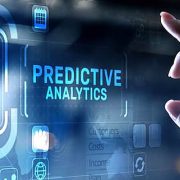Leveraging Machine Learning to Augment Business Intelligence
Modern business intelligence (BI) practices are increasingly incorporating machine learning (ML) to unlock deeper insights and enhance decision-making capabilities. ML goes beyond traditional BI’s focus on historical data analysis by introducing predictive capabilities and automation, leading to significant advantages.
Here’s how ML empowers BI to deliver greater value:
-
Granular Customer Segmentation: By analyzing customer data, ML algorithms can identify distinct customer groups with shared characteristics. This enables businesses to develop targeted marketing campaigns, personalize customer experiences, and ultimately maximize customer lifetime value [1, 2].
-
Proactive Business Strategies: ML models can forecast future trends in sales, demand, or resource allocation. This empowers businesses to anticipate potential challenges and opportunities, allowing for proactive strategies and optimized resource allocation [1, 2].
-
Streamlined Workflows and Data Analysis: ML automates repetitive tasks such as data cleaning and analysis, freeing up valuable human resources for more strategic endeavors. This fosters a data-driven culture where employees can focus on interpreting insights and making informed decisions [3].
-
Enhanced Fraud Detection and Security: ML excels at identifying anomalies and patterns in data that might indicate fraudulent activity or security breaches. This proactive approach mitigates risks and safeguards business assets [2].
-
Process Optimization and Cost Reduction: Businesses can leverage ML to analyze data and identify areas for operational improvement. This data-driven approach can optimize workflows, streamline resource allocation, and ultimately reduce operational costs [4].
- Predictive Analytics: Machine learning algorithms analyze historical data to identify patterns and trends, enabling organizations to predict future outcomes and anticipate market trends. Predictive analytics helps businesses make informed decisions, optimize processes, and identify opportunities for growth.
- Customer Segmentation and Personalization: ML algorithms segment customers based on their behavior, preferences, and demographics, allowing businesses to tailor marketing strategies and product offerings to specific customer segments. Personalized recommendations and targeted marketing campaigns can improve customer engagement and drive sales.
- Anomaly Detection: Machine learning algorithms detect anomalies and outliers in data, such as fraudulent transactions, equipment failures, or cybersecurity threats. By identifying unusual patterns or deviations from normal behavior, businesses can mitigate risks, prevent losses, and enhance security measures.
- Natural Language Processing (NLP): NLP techniques analyze unstructured data, such as customer feedback, social media posts, or emails, to extract valuable insights and sentiment analysis. By understanding customer sentiments and feedback, businesses can improve products, services, and customer experiences.
- Optimized Resource Allocation: ML algorithms optimize resource allocation by analyzing data on supply chain, inventory levels, and demand forecasts. Businesses can minimize costs, streamline operations, and improve efficiency by allocating resources effectively based on predictive analytics and demand forecasting.
- Churn Prediction and Customer Retention: Machine learning models predict customer churn by analyzing customer behavior and identifying factors that contribute to churn. Businesses can implement targeted retention strategies, such as personalized offers or proactive customer support, to reduce churn rates and retain valuable customers.
- Sales Forecasting and Inventory Management: ML algorithms forecast sales and demand trends based on historical sales data, market conditions, and other relevant factors. Accurate sales forecasting helps businesses optimize inventory levels, reduce stockouts, and avoid overstocking, improving profitability and customer satisfaction.
- Continuous Improvement and Optimization: Machine learning models continuously learn from new data and feedback, allowing businesses to adapt and optimize their strategies in real-time. By leveraging ML-driven BI tools and analytics platforms, organizations can gain actionable insights, drive innovation, and stay ahead of the competition.
In conclusion, by incorporating machine learning, business intelligence transforms from a reactive function to a proactive strategic tool. This integration empowers businesses to make data-driven decisions, optimize processes, and achieve superior business outcomes [5].
Sources:
- [1] Machine Learning for Business Intelligence: Use Cases and Best Practices https://medium.com/@rao.mohsin.54/machine-learning-for-business-intelligence-use-cases-and-best-practices-ec3576c1065e
- [2] 14 Powerful Business Use Cases That Combine Business Intelligence With Machine Learning https://www.forbes.com/sites/forbestechcouncil/2022/10/13/14-powerful-business-use-cases-that-combine-business-intelligence-with-machine-learning/
- [3] 10 Common Uses for Machine Learning Applications in Business https://www.techtarget.com/searchenterpriseai/resources/AI-business-strategies
- [4] 6 Examples of AI in Business Intelligence Applications https://emerj.com/ai-function/business-intelligence-and-analytics/
- [5] Machine Learning in Business Intelligence: A Technical Exploration https://www.linkedin.com/groups/10308230/












Technoob I very delighted to find this internet site on bing, just what I was searching for as well saved to fav
I loved as much as you will receive carried out right here The sketch is attractive your authored material stylish nonetheless you command get got an impatience over that you wish be delivering the following unwell unquestionably come more formerly again since exactly the same nearly a lot often inside case you shield this hike
Tech Learner I am truly thankful to the owner of this web site who has shared this fantastic piece of writing at at this place.
Newtoki Awesome! Its genuinely remarkable post, I have got much clear idea regarding from this post . Newtoki
Its like you read my mind You appear to know so much about this like you wrote the book in it or something I think that you can do with a few pics to drive the message home a little bit but instead of that this is excellent blog A fantastic read Ill certainly be back